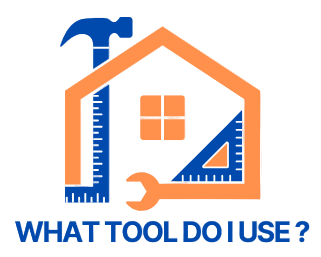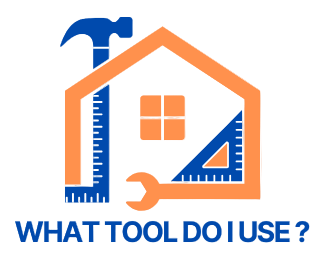To use an electric plane safely and accurately, set the correct cutting depth, hold the planer flat, and move it steadily along the wood grain. Keep firm pressure at the start and end of each pass. Smooth, overlapping strokes help achieve an even surface and professional finish. 🪵✅
Electric planers make light work of smoothing, levelling, and trimming wood, but only if used correctly. This guide shows you how to handle, adjust, and maintain an electric plane with confidence. With a few tips and the right approach, you can turn rough boards into smooth, precise surfaces worthy of a professional joiner. ✨
📖 View Table of Contents
Why Use an Electric Plane? 🪚
Electric planers are used to smooth and level wooden surfaces, remove rough edges, or reduce thickness. Compared with hand planers, they are faster and require less physical effort: Ideal for working on furniture, doors, or decking. 💪
Once you get used to the sound, feel, and rhythm of the tool, you’ll find it one of the most essential DIY tools for beginners tackling jobs around the home.
How an Electric Plane Works ⚙️
An electric plane has a fast-spinning drum fitted with two sharp blades underneath. As the drum rotates, it shaves thin layers off the wood surface. The cutting depth determines how much material is removed with each pass.
Most models include:
- Front and rear base plates: These keep the planer stable while gliding over the surface.
- Depth adjustment knob: Controls how deep the blades cut.
- Handle and trigger switch: For control and power.
- Dust extraction port: Connects to a vacuum or bag to collect shavings. 🌬️
Setting Up Your Electric Plane 🔧
Before planing, preparation is key. Follow these steps to set up correctly:
1. Inspect the Blades
Check that both blades are sharp, clean, and aligned evenly. Dull blades will tear the grain rather than shave it smoothly so replace or sharpen them if needed.
2. Adjust the Cutting Depth
Start shallow, around 0.5 to 1mm. You can always make another pass to remove more if needed. Taking too much off at once can strain the motor and gouge the surface.
3. Secure the Workpiece
Clamp your wood firmly on a stable surface. Movement during planing can lead to uneven results or accidents. 🧰
4. Check Power and Dust Collection
Ensure your cord or battery is secure and away from the cutting path. Connect a dust bag or vacuum if available as it keeps the work area clear and helps you see what you’re doing. 👀✨

Planing Technique: Step-by-Step 🪵
Once you’re set up, it’s time to start planing. Follow this step-by-step guide to achieve smooth, even results:
1. Position Correctly
Hold the front handle with your left hand and the rear handle (with trigger) in your right. Keep your body aligned with the direction of planing.
2. Start at the Edge
Place the front base flat on the wood with the blades clear of the surface. Squeeze the trigger to start the motor, then move the planer forward at a steady pace.
3. Apply Balanced Pressure
At the start of the pass, apply slightly more pressure to the front. As you near the end, shift pressure to the rear to keep it level. Don’t force it.... let the blades do the work. 🎯
4. Work with the Grain
Always move the planer in the direction of the wood grain. Planing against the grain can cause tears and splintering.
5. Overlap Passes
For a uniform finish, overlap each pass slightly. This avoids ridges between runs.
6. Finish Smoothly
Turn off the tool only once it’s fully clear of the wood. Lift it away gently to avoid gouges.
Safety Tips for Beginners ⚠️
Electric planers are safe when used properly, but they are still power tools with sharp, fast-moving blades. Keep these safety habits in mind:
-
✅ Planer Safety Tips:
- 🥽 Always wear eye protection and a dust mask.
- 🧲 Check the area for nails or screws before planing.
- ⏹️ Wait for the blades to stop spinning before setting the tool down.
- ✋ Keep hands clear of the base plate while the planer is running.
- 💡 Work in a well-lit, stable area free from clutter.
Maintaining Your Electric Plane 🧽
Good maintenance ensures your planer stays accurate and efficient:
- 🧹 Clean dust and shavings after each use.
- 🛢️ Lightly oil moving parts to prevent corrosion.
- 📦 Store in a dry place with blades retracted.
- ⚙️ Replace or sharpen blades regularly as blunt blades can overheat and burn wood.
- 🔧 Check the drive belt occasionally for wear or cracks.
Troubleshooting Common Issues 🔍
- Uneven surface: Check your pressure balance: Keep front pressure at the start and rear pressure at the end.
- Rough finish: Reduce cutting depth and ensure blades are sharp.
- Burn marks: Move the planer faster or sharpen blades to prevent friction.
- Clogged shavings port: Clear debris and use dust extraction if available.
Other Essential DIY Tools for Beginners 🧰
Once you’re comfortable using an electric planer, expand your setup with this useful guide: What Are the Essential DIY Tools Every Beginner Should Own?. These will make every project easier and safer:
📚 Read Next: Related DIY Guides
- How Do I Know Which Drill Bits to Use for Different Materials?
- Beginner’s Guide to DIY Tool Safety: What Every New DIYer Should Know.
Take it slow, practise on scrap timber, and always prioritise safety. Once you’ve mastered your electric plane, you’ll be amazed at how professional your DIY projects start to look. ⚒️
🛠 Useful Tools & Accessories for Electric Planing
🔒 Affiliate links: This post may include affiliate links, meaning I may earn a small commission if you buy through them — at no extra cost to you. I only recommend tools I trust and use myself.
🔗 Recommended: Jellas Electric Planer (230–240V)
16000 RPM electric planer with reversible HSS blades and 2mm depth adjustment — ideal for beginners flattening and trimming timber.
View Product🔗 Recommended: Jorgensen Woodworking Clamps (4-Pack)
Hold timber securely in place to prevent rocking, shifting or snatching during planing.
View Product🔗 Recommended: HOMCOM Adjustable Steel Trestles (Set of 2)
Creates a stable, safe work platform for planing doors, shelves or long boards.
View Product🔗 Recommended: OX Premium Trade Spirit Level
Check for flatness, twist and straightness after planing to achieve professional-level results.
View Product🔗 Recommended: AirGearPro G-500 Respirator Mask
Electric planers create fine airborne dust — this respirator protects your lungs as you work.
View Product🔗 Recommended: NoCry Clear Safety Glasses
Protects your eyes from flying chips and heavy dust thrown forward by the planer blades.
View Product




